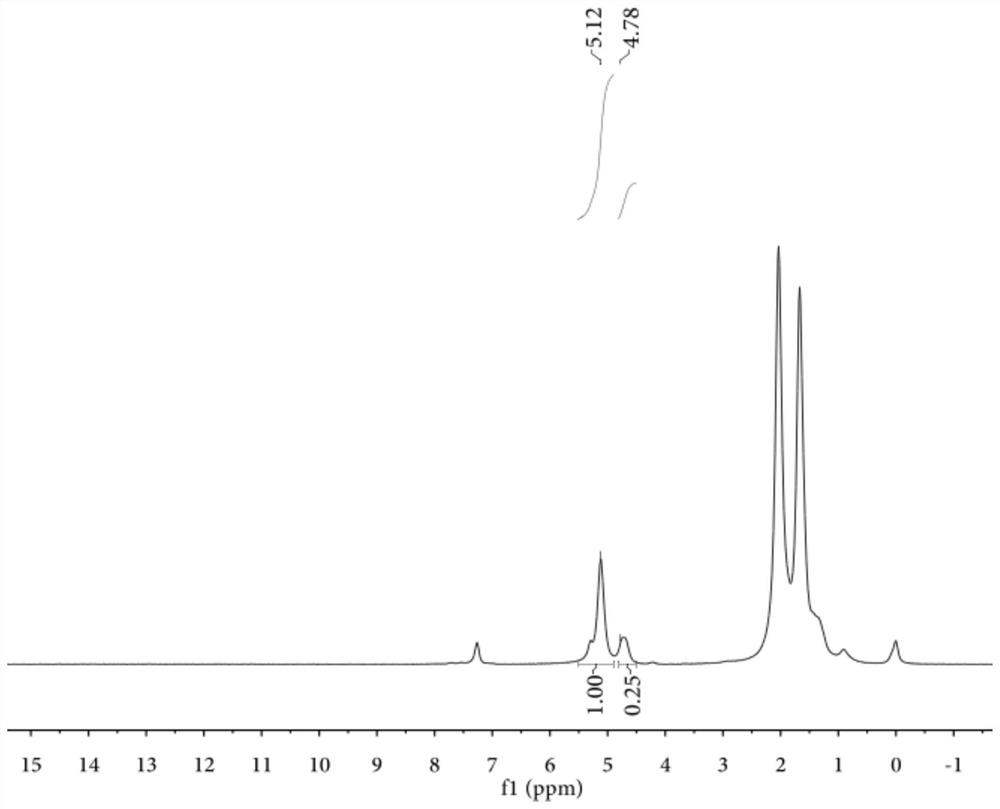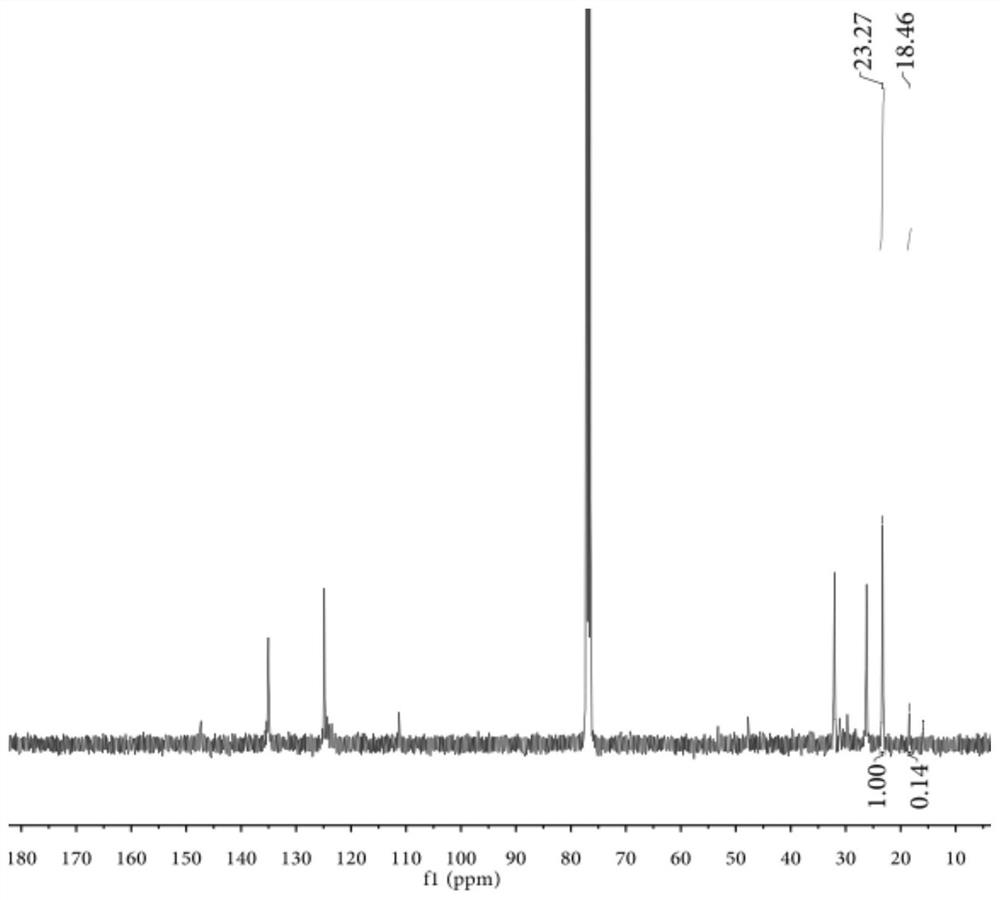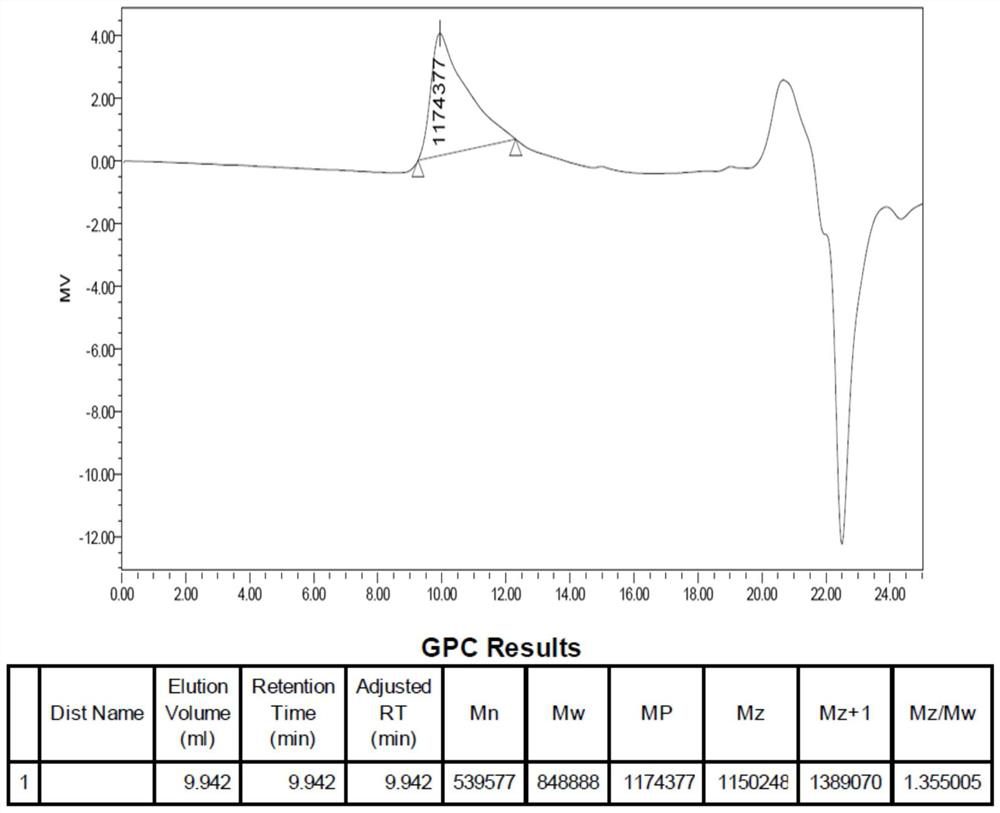Application of a chromium-based metal-organic framework material in olefin polymerization
A metal-organic framework and olefin polymerization technology, applied in the field of metal-organic framework material catalysis, can solve the problems of poor selectivity and low catalytic activity, and achieve the effects of good selectivity, high selectivity and reduced polymerization cost.
- Summary
- Abstract
- Description
- Claims
- Application Information
AI Technical Summary
Problems solved by technology
Method used
Image
Examples
Embodiment 1
[0073] (1) Stir the chromium metal organic framework material Cr-MIL-101 with ethanol and water at 75°C for 30 minutes to clean the impurity, and treat it in vacuum at 200°C for 2 hours to obtain the high temperature activated chromium metal organic framework material, the catalyst;
[0074] (2) Add 25 μmol catalyst and 5ml toluene to the eggplant bottle placed in the glove box, and stir evenly with a magnetic stirrer; add 50 μmol AlMe 3 , continue magnetic stirring evenly; add 5mmol isoprene and 25μmol [PhNHMe 2 ][B(C 6 f 5 ) 4 ], stirred and reacted for 5h at 20°C, and the above steps were carried out in an anhydrous and oxygen-free environment provided by a glove box;
[0075] (3) The catalyst is filtered out from the eggplant bottle, and 30 mL of ethanol solution of 2,6-di-tert-butyl-4-methylphenol with a mass fraction of 5% is added to terminate the reaction; the reaction solution is carried out with absolute ethanol Settled, precipitated solid matter, vacuum-dried t...
Embodiment 2
[0086] (1) with embodiment 1 step (1);
[0087] (2) [PhNHMe 2 ][B(C 6 f 5 ) 4 ] The addition of 50 μ mol is changed into, all the other are with embodiment 1 step (2);
[0088] (3) With embodiment 1 step (3).
[0089] The following tests were carried out on the chromium metal-organic framework material and the polymerization product after high-temperature activation prepared in this example:
[0090] (1) Powder X-ray Diffraction Detection
[0091] The peak position of the chromium metal organic framework material after high temperature activation is completely consistent with the standard map of the chromium metal organic framework material Cr-MIL-101, which proves that the chromium metal organic framework material after high temperature activation has not collapsed and can be used for catalysis in subsequent steps .
[0092] (2) NMR detection
[0093] The ppm of the NMR spectrum of the polymerization product prepared in this example is the integration at 5.12 and 4.78...
Embodiment 3
[0099] (1) with embodiment 1 step (1);
[0100] (2) [PhNHMe 2 ][B(C 6 f 5 ) 4 ] The addition of 75 μ mol is changed into, and all the other are with embodiment 1 step (2);
[0101] (3) With embodiment 1 step (3).
[0102] The following tests were carried out on the chromium metal-organic framework material and the polymerization product after high-temperature activation prepared in this example:
[0103] (1) Powder X-ray Diffraction Detection
[0104] The peak position of the chromium metal organic framework material after high temperature activation is completely consistent with the standard map of the chromium metal organic framework material Cr-MIL-101, which proves that the chromium metal organic framework material after high temperature activation has not collapsed and can be used for catalysis in subsequent steps .
[0105] (2) NMR detection
[0106] The ppm of the NMR spectrum of the polymerization product prepared in this example is the integration at 5.12 and ...
PUM
| Property | Measurement | Unit |
|---|---|---|
| glass transition temperature | aaaaa | aaaaa |
| transition temperature | aaaaa | aaaaa |
| transition temperature | aaaaa | aaaaa |
Abstract
Description
Claims
Application Information
 Login to View More
Login to View More - R&D
- Intellectual Property
- Life Sciences
- Materials
- Tech Scout
- Unparalleled Data Quality
- Higher Quality Content
- 60% Fewer Hallucinations
Browse by: Latest US Patents, China's latest patents, Technical Efficacy Thesaurus, Application Domain, Technology Topic, Popular Technical Reports.
© 2025 PatSnap. All rights reserved.Legal|Privacy policy|Modern Slavery Act Transparency Statement|Sitemap|About US| Contact US: help@patsnap.com



